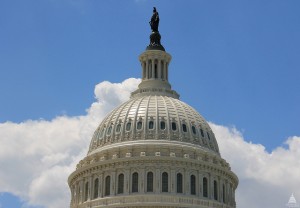 Photo Credit: Day Donaldson/Flickr
Photo Credit: Day Donaldson/Flickr
The Next Step in Countering ISIL Messaging
This article is by ASP Adjunct Senior Fellow Pascale Siegel.
The next step in countering ISIL has finally arrived. On 16 March 2016, President Obama signed the executive order establishing the Global Engagement Center. The center is tasked with coordinating and synchronizing the Government communications toward foreign audiences to counter the message and diminish the influence of international terrorist organizations such as ISIL and al-Qaeda. Michael D. Lumpkin, previously Assistant Secretary of Defense for Special Operations and Low-Intensity Conflict, heads the center and reports to Richard Stengel, Assistant Secretary of State for Public Diplomacy.
The center replaces the defunct Center for Strategic Counterterrorism Communications (CSCC) established in late 2011 and whose effectiveness had come into question. The new center’s mission is comparable to that of the CSCC: disrupt and diminish the influence of radical violent terrorists such as al-Qaeda and ISIL. Its lines of operations are broader. The new center will be the lead agency for synchronizing all government-wide communications activities. It will be a producer of content – particularly of ‘strategic counterterrorism narratives.’ And it will identify and engage with foreign partners abroad including government, private sector, and civil society elements. Whether it will be more successful than its predecessor remains to be seen, as there are significant challenges ahead.
Bureaucratic Challenges
Three main agencies are involved in shaping the image of the US abroad: the Department of Defense, the Department of State, and the Broadcasting Board of Governors. Problems in coordination and synchronizing the approaches and activities of these three agencies continue to recur as attested by a 2005 GAO review, 2007 GAO review, and Mike Waller’s 2010 testimony before Congress. Designating the Global Engagement Center as lead agency for coordinating and synchronizing fills a much needed void. Yet, it can hardly be said that the center is receiving the means it needs to accomplish its mission.
First, the center has no organic assets. Instead, agencies are tasked with providing the personnel, know-how, and logistical support “consistent with budget priorities and mission constraints.” Furthermore, a temporary Coordination office designed to support the Center is established on a temporary basis pursuant to US Code, Title 5, Section 3161. By statute, the period of appointment is three years with a possible two-year extension. This is hardly the organization of a bureaucratic powerhouse.
Second, even though the Center is designated as the lead for coordination and synchronization for all U.S. Government agencies, it will be overseen by a steering committee composed of the very organizations (from Defense, to CIA, Justice, DHS, BBG, USAID, and others as needed) it is supposed to coordinate and synchronize. That steering committee is tasked with providing advice and strategic orientation and ensuring adequate support. In an ideal world, it would make enough sense that all the organizations working toward a single goal would work collaboratively. In the real world of bureaucratic politics, turf and budget battles, lines of authority, personal and organizational rivalries tend to get in the way of that lofty goal.
Content Producer
Like its predecessor, the Center is tasked with developing and producing content including “on the basis of rigorous research and modern data analysis, the U.S. strategic counterterrorism narratives, guidance, and associated communications strategies.” The focus on producing new narratives that challenge ISIS is important and welcome assuming the government truly understands what narratives are.
Narratives are key. We organize our experience and our memory of human happenings mainly in the form of narrative. Through narratives in the form of stories, excuses, and myths,
we rationalize our choices for doing and not doing things. Through the narratives we tell about ourselves and the world around us, we co-construct our version of reality and our own place in it. This is a never-ending process of constant reconstruction and reinterpretation. Narratives thus play a fundamental role in shaping first our perception and then our understanding of the realities happening around us. Narratives are about meaning.
Producing effective narratives is not simply about finding a good catchy slogan. Narratives are effective because of their message’s appeal, the structure they use, and the resonance they have with one’s personal experience. We need to understand the qualities and features that make narratives effective and understand what is acceptable and unacceptable to our audiences before we can start negotiating working counter-narratives.
Capacity Builder
Lastly, the Global Engagement Center engages with governmental, private sector, and civil society organizations and builds the capacity of partners to create “resonant positive alternative narratives” and diminish the influence of ISIL and like-minded groups’ narratives. This comes after a panel of experts assessing the previous Center for Strategic Counterterrorism Communications determined that the USG was not the best spokesman as it lacks credibility to convey a convincing narrative.
Surely, such an effort would bring significant benefits. Working through proxies allows the USG to deliver its message without its low credibility hampering receptivity. In addition, it enlists relays that can reach new audiences.
A first, there will be difficulty in identifying and vetting able and willing partners around the globe. It will not be easy to put in place a process to systematically survey and identify existing and potential capacity across countries and languages. Another difficulty will come with vetting. How will potential partners be chosen? Will they be vetted with political litmus tests?
Lastly, what business model will sustain the engagement of the private sector and civil society over time? The for-profit and not-for-profit private sectors do not work for free. If we engage them through the usual contracting procedures for specific projects, can we sustain a coherent long-term campaign? Similarly, if we choose to engage with benevolent individuals, imams, community leaders who speak up, how do we make sure their efforts can be sustained over time?







